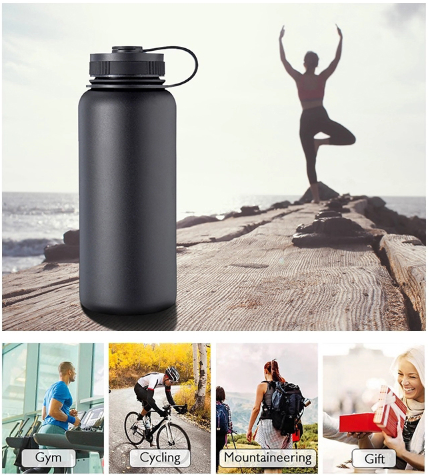As we explore the various ways to reuse and repurpose everyday objects, it’s time to take a look at the little-known potential of the humble water bottle. While we usually associate water bottles with on-the-go hydration, they can be surprisingly useful when it comes to personal hygiene. In this blog, we dig into the topic of how to safely and sensibly rinse with a water bottle.
First, it’s important to understand what douching is and why people choose to do it. Douching is the process of introducing fluid into the vagina, usually to clean or freshen the area. However, it’s important to remember that the vagina is a self-cleaning organ and usually doesn’t need extra help. Douching can disrupt the natural balance of bacteria and increase the risk of infections, such as bacterial vaginosis or yeast infections. It is always wise to consult a healthcare professional before considering douching.
If you receive advice from a healthcare professional to douche for medical reasons, you must proceed with caution and follow best practice. Using a water bottle as a makeshift irrigator is a safe and effective method if done correctly.
1. Choose the right kettle:
Choose a water bottle with a smooth spout and a wide mouth. Wide mouth bottles are easier to fill and clean. Make sure water bottles are thoroughly cleaned and sanitized before use to prevent the introduction of any harmful bacteria.
2. Prepare the rinse solution:
Never rinse with water as this will disrupt the vagina’s natural pH balance. Instead, make a mild homemade brine solution by dissolving a teaspoon of salt in a cup of warm, purified water. This solution helps maintain the balance of healthy bacteria in the vagina.
3. Find a comfortable position:
To make the procedure as comfortable as possible, find a position where you are relaxed and have easy access to your vaginal area. Some common positions include sitting on the toilet, squatting in the shower, or lying on your back with your knees bent. Experiment with different positions to find what works best for you.
4. Rinse carefully:
Gently insert the nozzle of the water bottle into the vagina, making sure it is securely seated. Slowly squeeze the water bottle to release the saline solution into your vagina. Allow the liquid to drain naturally, and repeat the process until you have used the recommended amount of solution as recommended by your healthcare professional.
5. Clean and store the water bottle:
Thoroughly clean and sanitize water bottles after use. Rinse with warm water and mild soap, then air dry or use a clean towel to avoid bacterial growth. Store the water bottle in a clean, dry place for future use.
Keep in mind that douching is not necessary for most people and can lead to potential health risks. Always consult a healthcare professional before adopting any new hygiene routine or if you experience any vaginal problems.
By judiciously repurposing water bottles and following the guidelines provided, you can create a safe and effective alternative to douching. Remember, taking care of our bodies should always prioritize safety and informed decision-making.
Disclaimer: The information presented in this blog is for educational purposes only and should not be considered medical advice. Consult a healthcare professional for individualized medical guidance.
Post time: Jun-19-2023


